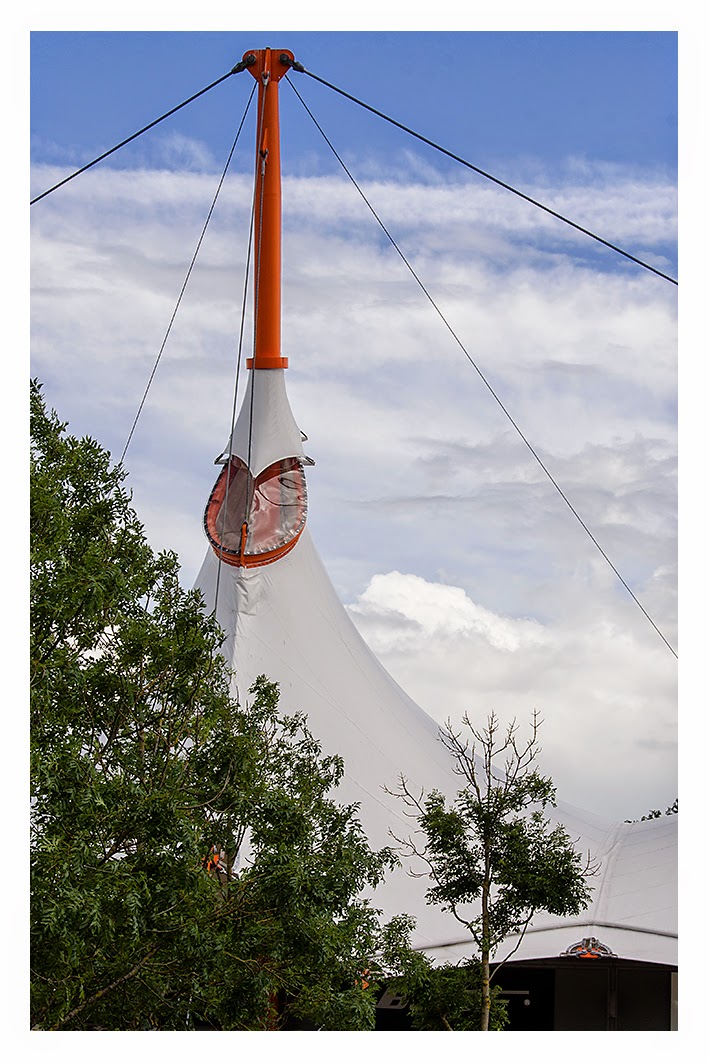For the second part of this exercise I had to re-visit the same location as before but this time use my DSLR. I was to try to apply a 'craft approach to the scene' which I took to mean put my compositional skills and photographic knowledge to best use. I'm not sure if I've shown the service area around Ashford International Station and the Designer Outlet at its 'best or most intriguing' - but I have photographed the images in style that I would normally apply.
This time I used my 18-200mm zoom and was able to focus in on certain elements and I have applied more liberal use of cropping and adjustment in post processing than with the first set of images using my compact.
When considering this second set of images and the role of the social documentary photographer it is most definitely possible to create a false impression. In this second approach I have focused more on the buildings that inhabit this space - mainly the outlet centre and the International Station. I have tried to avoid the graffiti and discarded items that can be found in these locations. I have tried to include more greenery in the surrounding walkways and paths too. I was able to focus in on compositions that I saw in my mind that would not have been possible with the small compact camera.
In my choice of location the difference between the two sets is not overly remarkable. But it does show that the photographer can sway the viewer with their on take on any situation. No photographer is without bias. Yes, social documentary photographers do need to approach their projects with integrity. Their reputations are at stake and they cannot be found to have manipulated their images or the situations that they photograph in any way. Yet we do read that this has happened time and time again with many news reports. The viewer when looking at a visual communication medium such as photography needs to be aware that all photographs are political in some respect. I think it is very hard for people to remember this as we can still hang on to the pre-digital view that the 'camera never lies'. In the past social documentary photographers have been complicit in this cultural assumption.
It is interesting that the general reading public don't treat text in the same way. Well, at least people are more inclined to be suspicious of political bias in the press. In some respects the digital photography revolution has helped to dispel many myths. One of the mistakes that is commonly made though is the thinking that manipulation only applies to digital photography. In the rush to criticise it is easy to fall into the trap of not realising that manipulation has always happened - even if that means re-arranging a scene before it is even photographed. Some of the American FSA photographers were known for this.










No comments:
Post a Comment